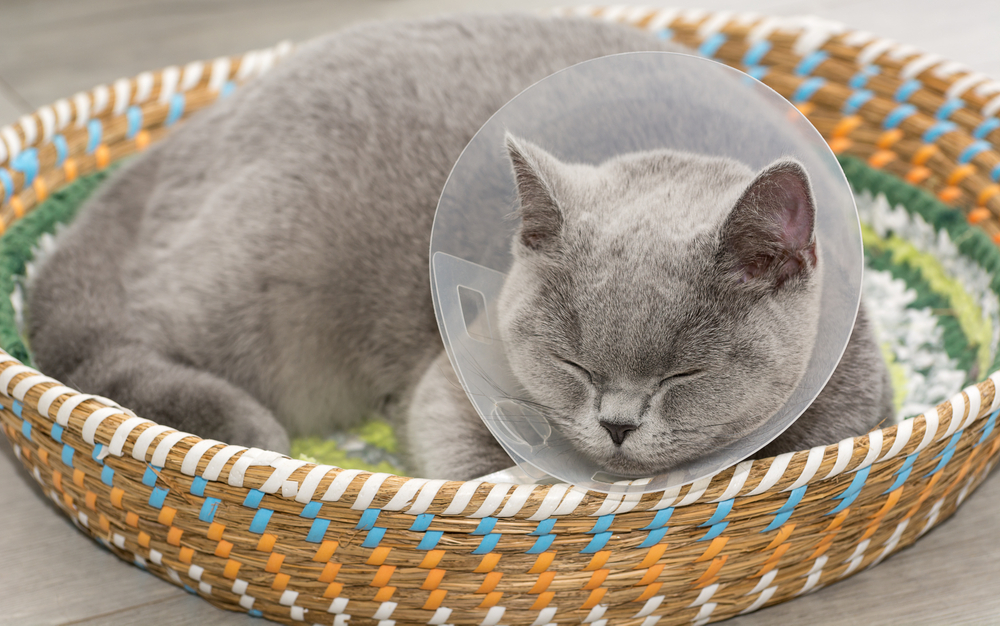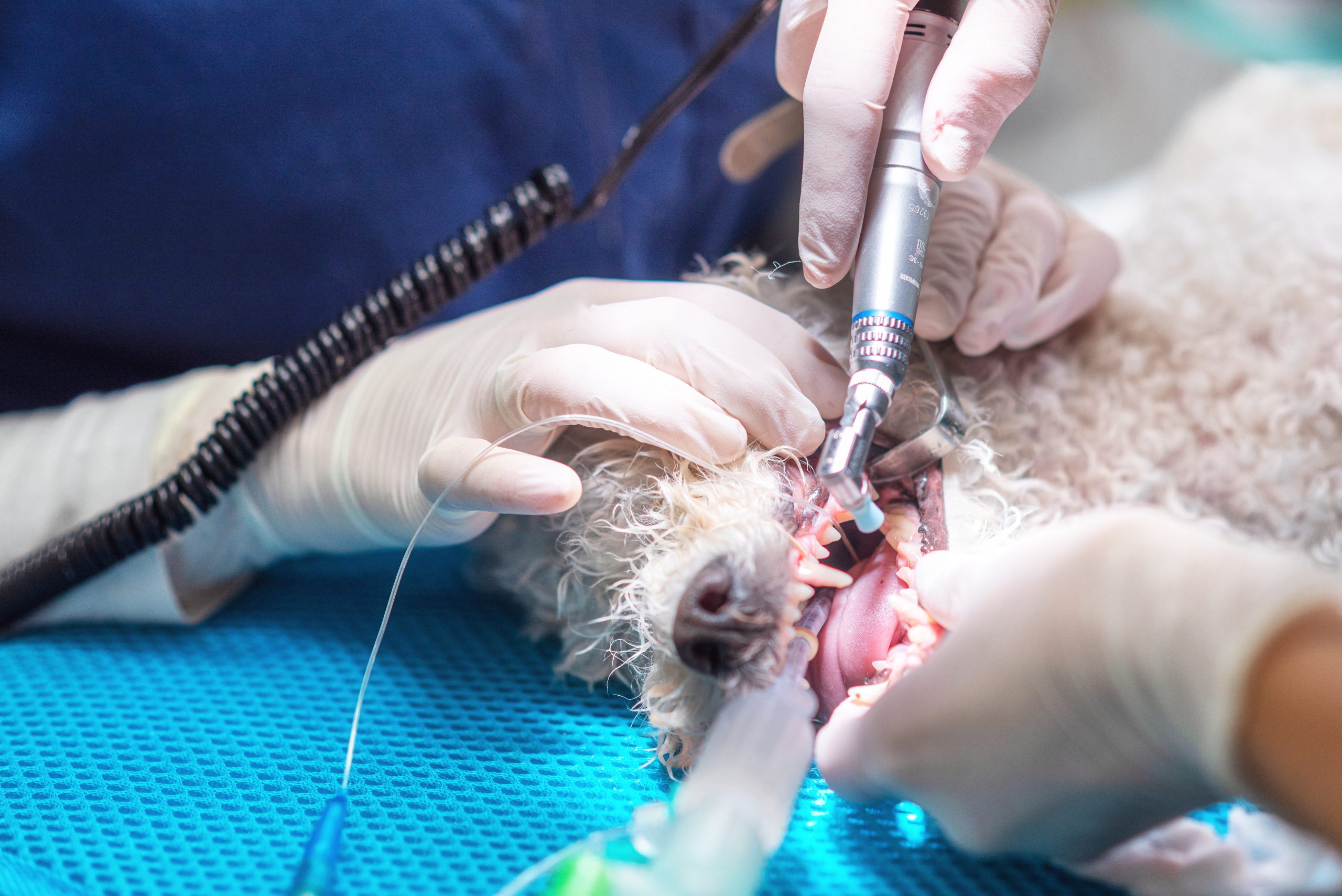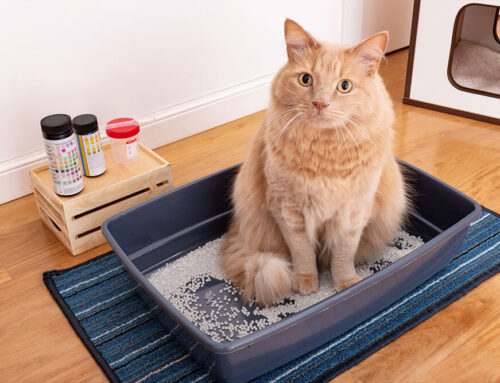Up to 80% of pets experience some degree of dental disease by age 3, which, in turn, can lead to significant health issues. Proper oral hygiene is key to helping your pet avoid oral pain, dental infections, and potentially serious heart, liver, and kidney complications. While daily at-home toothbrushing is a critical component of your pet’s oral health, so are annual professional dental cleanings.
Our team at Animal Clinic of Council Bluffs wants to help you understand the ins and outs of this important procedure by explaining the four phases of a professional dental cleaning.
Phase 1: Your pet’s pre-procedure evaluation
During the pre-procedure evaluation, your pet will receive a thorough examination, including assessment of their vital signs, mouth, heart, lungs, and blood work. Our team will:
- Conduct pre-anesthetic testing — By reviewing your pet’s medical history, we can check for any concerns that might make the use of anesthesia riskier for your pet. We may delay the cleaning procedure if your pet has a worsened pre-existing health condition, or if they have an infection, are dehydrated, or are anemic.
- Create an individualized anesthetic protocol — Based on your pet’s pre-procedure evaluation, our team will determine the safest sedative and pain control medications. Pets must be anesthetized during dental treatments so both they and the veterinary professionals performing the procedure are protected.
Phase 2: Your pet’s preparation for their dental procedure
Before your pet’s dental procedure, our team makes the necessary preparations to administer fluids and anesthesia, including:
- Intravenous (IV) catheter placement — An IV catheter is placed so we can administer fluids throughout the procedure to maintain your pet’s hydration and blood pressure. This also provides IV access that can be used to administer fast-acting medications, should a rare complication arise.
- Sedation — A sedative and pain medication will be administered to help your pet relax so they do not experience any unnecessary anxiety or fear.
Phase 3: Your pet’s dental procedure
- Anesthetic induction — Once your pet is fully relaxed, we administer an IV anesthetic to cause unconsciousness. We then place a breathing tube to secure their airway, and administer anesthetic gas and fresh oxygen to maintain anesthesia.
- Dental X-rays — Full-mouth X-rays are taken so we can examine the tooth structure below the gumline. Since the majority of each tooth is buried, X-rays are essential to fully evaluate the tooth root, periodontal structures, and surrounding bone. Any problems, such as fractures, abscesses, tumors, bone loss, or tooth-root abnormalities, are documented on your pet’s dental chart so we can track their dental health over time.
- Dental cleaning — Like people, pets develop sticky plaque on their teeth within hours of eating, and if the plaque isn’t removed, it hardens to a thick tartar. During your pet’s dental cleaning, the tartar will be removed from your pet’s teeth above and below the gumline. The scaler used creates tiny microabrasions on the surface of their teeth, so we polish them afterward to smooth out the enamel, which helps prevent future plaque buildup. In addition, we often apply fluoride to your pet’s teeth to help strengthen the enamel. It is not uncommon during a dental cleaning to find that a pet has infected, decayed, fractured, or diseased teeth that need to be extracted. If that happens, we will call you to discuss the details.
Phase 4: Your pet’s dental procedure recovery

By monitoring every step of your pet’s dental cleaning procedure, we can provide a recovery process that is smooth and pain-free. That includes:
- Helping your pet recover from the anesthesia — Team members will stay with your pet throughout the recovery process. Once your pet’s vital signs are stable and the monitoring equipment is removed, they will relax in a recovery cage with plenty of comfortable blankets until they are ready to go home.
- Talking to you after your pet’s dental appointment — When you come to pick up your pet, we will answer any questions, go over recommended at-home oral care, and discuss what to watch for going forward when it comes to your pet’s oral health.
At Animal Clinic of Council Bluffs, we want to ensure your pet avoids painful dental issues that can threaten their overall health. By scheduling annual dental cleanings, and keeping up with at-home care, you can keep your furry friend’s mouth problem-free. Call us today to schedule your pet’s appointment.






Leave A Comment